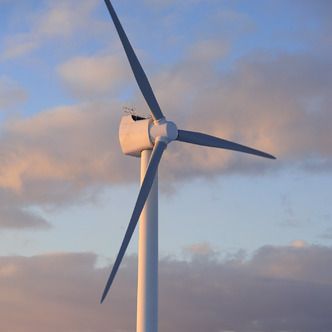 With the commissioning and testing of its 4.1 MW direct-drive wind turbine under way in Sweden's Gothenburg harbor, GE is intent on moving forward with its offshore offering, and the turbine should be operating by mid-December, company spokesperson Lindsay Theile tells NAW.
With the commissioning and testing of its 4.1 MW direct-drive wind turbine under way in Sweden's Gothenburg harbor, GE is intent on moving forward with its offshore offering, and the turbine should be operating by mid-December, company spokesperson Lindsay Theile tells NAW.
Many industry observers are keeping tabs on the latest iteration of GE's offshore wind turbines, considering the results of the company's first foray into the offshore market: In its early attempts to break into the space, GE attempted to adapt its 3.6 MW onshore turbine for the offshore market – an effort that was ultimately doomed for failure.
According to Theile, GE is not seeing a pipeline of orders to justify its investment in certain areas, and the company recently announced layoffs at its Norwegian unit.
‘The restructuring is in process, and employees have been notified," she tells NAW.
GE's progress has particular importance for Freshwater Wind, a Cleveland-based developer of the Icebreaker Wind Project, a 20 MW to 30 MW development that plans to install five to seven GE 4.1 MW wind turbines in Lake Erie in 2013.
‘We had heard some chatter related to [GE's] changes in Norway and Sweden,’ says Lorry Wagner, president of Lake Erie Energy Development Corp. ‘But until we hear otherwise, we remain committed [to the GE 4.1 MW turbine].’
Dan Shreve, a principal at MAKE Consulting, says GE has fallen behind other turbine manufacturers, such as Siemens, Vestas, REpower and Alstom – all of which are quickly moving toward commercializing offshore wind turbines exceeding 6 MW.
‘GE's current strategy is quite interesting – taking the longer view and seeking to develop technology positioning that creates a sustainable competitive differentiator versus developing a "me-too' product,’ he says, adding that in order to catch up with the current offshore leaders, the company would have to heavily invest in support for its European operations.
‘These are significant financial risks, especially given demand uncertainty in the U.S. onshore market post-2012, where GE derives a majority of its revenue,’ Shreve notes.
‘The downside, of course, is that the offshore segment will serve as the key market-growth mechanism within the European Union (EU), and by choosing not to engage, GE is sacrificing potential revenues and an opportunity to improve its market share in the EU,’ he adds.



